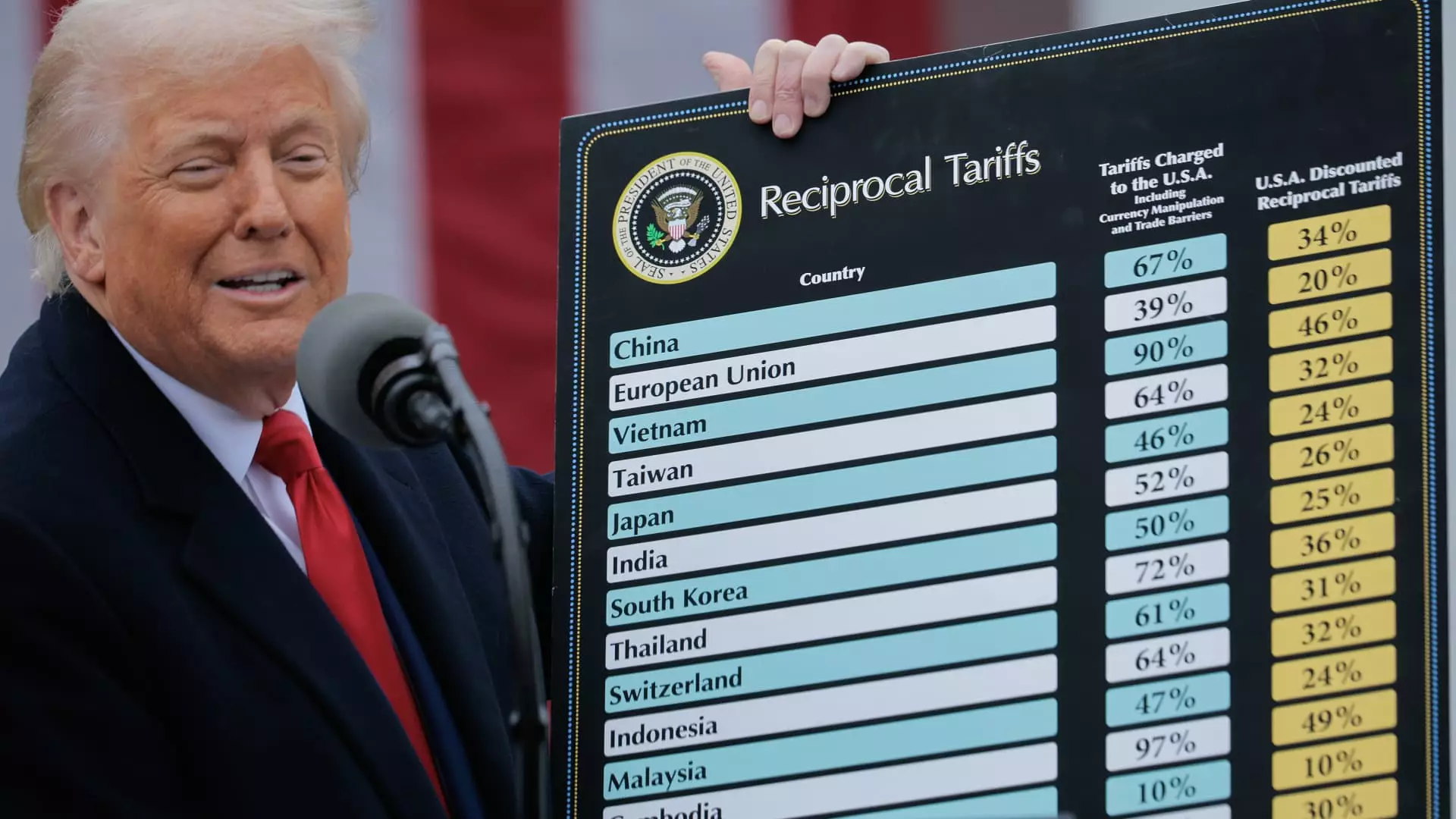The intricate world of international trade is complex and fraught with challenges, but President Donald Trump’s recent tariff policy presents a simplistic and almost reckless approach. Announced with much fanfare, this “reciprocal” tariff scheme intends to impose a 10% baseline tariff on most nations, with countries like China, Vietnam, and Taiwan facing much higher rates. While the intention might be to protect American industries, the underlying execution raises a plethora of questions about the rationale and accuracy behind these tariffs.
Misguided Calculations and Data Manipulation
One of the most disconcerting aspects of Trump’s tariff policy is the seemingly arbitrary calculations used to justify these sweeping measures. Rather than relying on established economic data, the administration appears to base their numbers on exaggerated figures that have been widely debunked. For instance, the Trump administration alleged that China imposes a staggering 67% tariff on U.S. goods, a number that is laughable when contrasting it with the Cato Institute’s findings, which reveal a mere 3% trade-weighted average tariff. This discrepancy illustrates a fundamental misunderstanding—or perhaps manipulation—of economic principles that ultimately misleads the American public and the business community.
The Flawed Formula
Critics have pointed out that the administration’s approach, which involves dividing the trade deficit by imports to determine tariff rates, neglects essential components of trade, most notably the services sector. By focusing solely on goods, Trump’s policy disregards the modern economy’s multifaceted nature. The assumption that imposing steep tariffs will resolve a trade imbalance is naïve at best; it ignores the fact that trade relationships are interdependent and complex. Therefore, applying a blunt instrument like tariffs does not address the nuances of global commerce and could lead to unintended economic turbulence.
The Political Ramifications
This tariff strategy is not just an economic misstep; it carries significant political ramifications. By prioritizing punitive measures over diplomatic negotiation, the administration risks alienating vital trade partners and fostering animosity. The fallacy that aggressive tariffs will compel nations to capitulate is simplistic and dangerous. Businesses that rely on these international relations may find themselves in precarious situations, and the resulting tension could lead to retaliation from affected countries, exacerbating what could be a trade war rather than a resolution.
Impacts on American Consumers
While the administration argues that tariffs will protect American jobs, the reality is that these measures will likely burden consumers instead. By imposing higher costs on imported goods, everyday American consumers will face increased prices in grocery stores, hardware shops, and electronic retailers. The irony of a policy set to safeguard American interests potentially harming the very constituents it claims to protect is hard to ignore. A trade policy driven by misguided bravado rather than sound economic theory can only lead to distress for average citizens.
As we navigate this uncertain landscape, it’s crucial for policymakers to prioritize informed and strategic approaches over reckless bravado. In the realm of international trade, there are no quick fixes, and our strategies must reflect that understanding.

